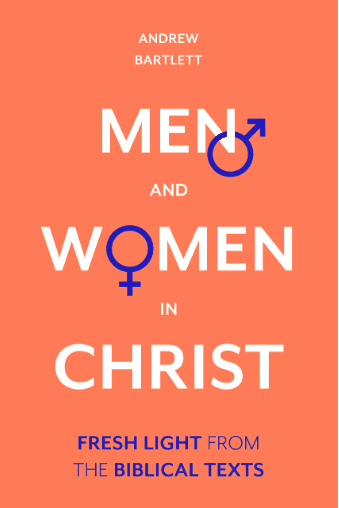 Paul, in 1 Cor 14 (text below), states that women should be “silent” in the churches, but this statement is right on the heels of women praying and women prophesied in Paul’s presence. So, what gives? Andrew Bartlett, in his new book Men and Women in Christ, probes this most difficult of texts. (#ad)
Paul, in 1 Cor 14 (text below), states that women should be “silent” in the churches, but this statement is right on the heels of women praying and women prophesied in Paul’s presence. So, what gives? Andrew Bartlett, in his new book Men and Women in Christ, probes this most difficult of texts. (#ad)
Since the disputed verse (14:34) comes in the middle of a discussion about church prophecy, I have the whole context in the NRSV:
1Cor. 14:26 What should be done then, my friends? When you come together, each one has a hymn, a lesson, a revelation, a tongue, or an interpretation. Let all things be done for building up. 27 If anyone speaks in a tongue, let there be only two or at most three, and each in turn; and let one interpret. 28 But if there is no one to interpret, let them be silent in church and speak to themselves and to God. 29 Let two or three prophets speak, and let the others weigh what is said. 30 If a revelation is made to someone else sitting nearby, let the first person be silent. 31 For you can all prophesy one by one, so that all may learn and all be encouraged. 32 And the spirits of prophets are subject to the prophets, 33 for God is a God not of disorder but of peace.
(As in all the churches of the saints, 34 women should be silent in the churches. For they are not permitted to speak, but should be subordinate, as the law also says. 35 If there is anything they desire to know, let them ask their husbands at home. For it is shameful for a woman to speak in church. 36 Or did the word of God originate with you? Or are you the only ones it has reached?)
37 Anyone who claims to be a prophet, or to have spiritual powers, must acknowledge that what I am writing to you is a command of the Lord. 38 Anyone who does not recognize this is not to be recognized. 39 So, my friends, be eager to prophesy, and do not forbid speaking in tongues; 40 but all things should be done decently and in order.
And now to Bartlett, who begins with a few important, cautionary observations. This discussion, which engages some with Grudem, reminds of the opening to some of Lucy Peppiatt’s stuff where she shows the complications in a text.
1. Verses 34—35 form a unit, separate from verse 33. Verse 33 should not be split into two and partly joined onto verse 34 as in some modern versions.
#2 is for me a fundamentally important observation.
2. The content of these two verses is in severe conflict with the surrounding context. This conflict raises interpretive issues for which no satisfactory solution has been found.
3. Paul seems to say that women’s silence is required by a command of the Lord Jesus. This is a further puzzle.
4. In the absence of a satisfactory solution to the interpretive puzzles, we cannot tell what to make of these verses. In particular, we cannot judge whether a restriction on women’s speaking which is based on an Old Testament scripture which cannot be identified (v. 34) and on cultural grounds (v. 35) should or should not apply to churches in different times and cultures.
Bartlett then proceeds to offer conclusions to what he thinks is reasonable, namely, that 1 Cor 14:34-35 are not original, not authentic, not written by Paul. This chp has an excellent discussion of the text critical evidence (Fuldensis, Vaticanus).
5. Belief that Scripture as originally given is God’s revelation requires Christian scholars to try to ensure, so far as possible, that the church is using accurate copies and not treating copying errors or spurious alterations as authoritative.
6. The text which is printed as 1 Corinthians 14:34—35 in our current Bibles is probably not authentic. The best explanation of the totality of the evidence currently available is that someone other than Paul wrote verses 34-35 in the margin as an early gloss or comment. Copyists mistook this as part of the original letter and promoted it into the main text, but were unsure where to position it. They inserted it in two different positions (some after v. 3 3, others after v. 40).
7. This explanation accounts for all the available evidential data, both external and internal. It does not conflict with any credible evidence. It resolves every historical and interpretive problem associated with these verses, including all the relevant features of the evidence from the manuscripts. No other explanation fulfils these criteria.











